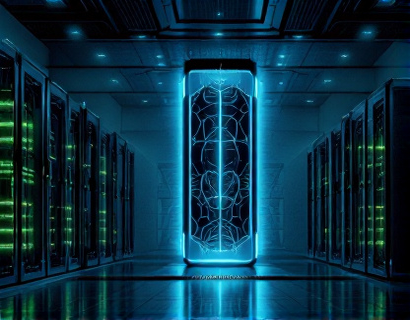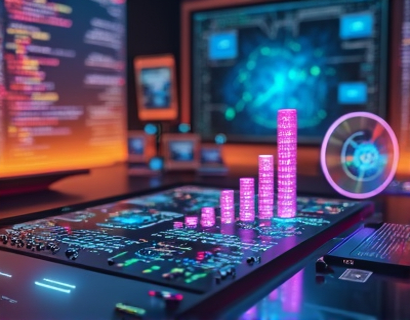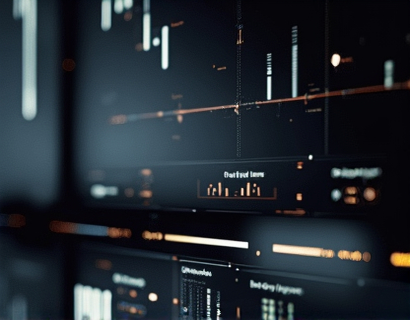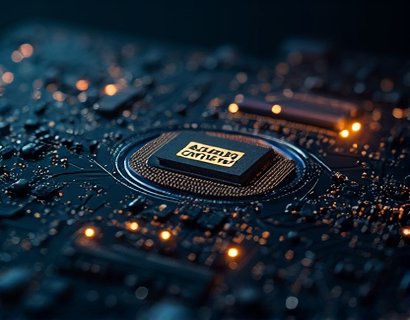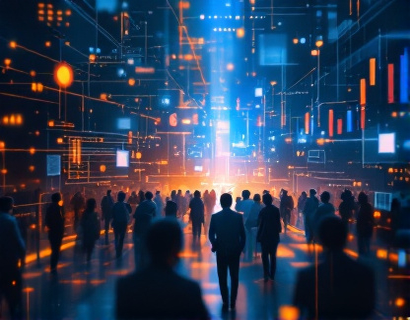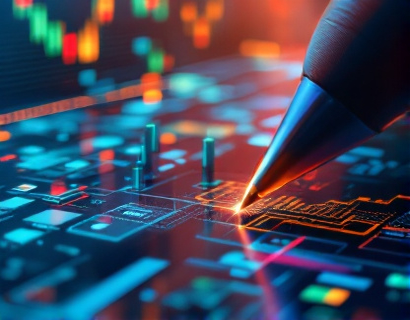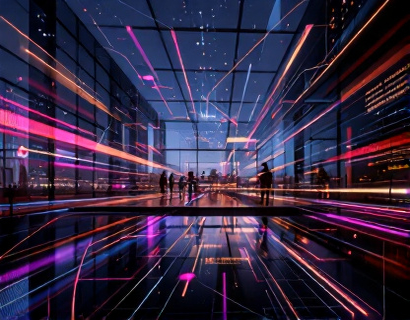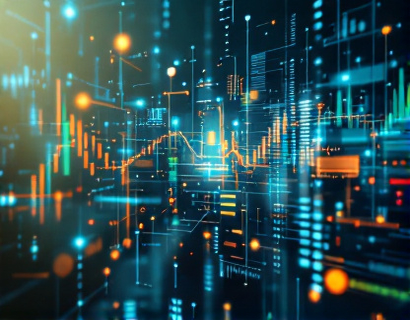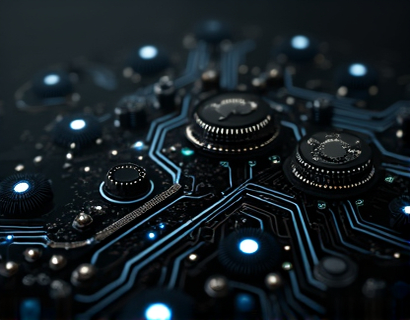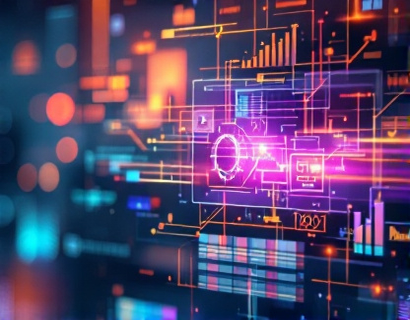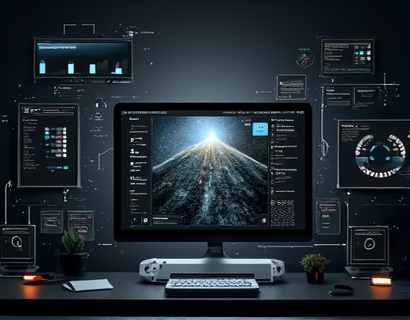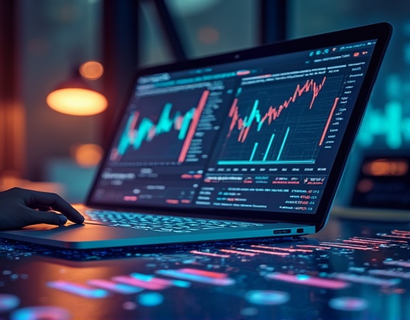Decentralized Transformation: Harnessing AI and Crypto for Next-Gen Digital Solutions
The digital ecosystem is undergoing a profound transformation, driven by the synergy of artificial intelligence (AI) and cryptocurrency. This convergence is not just a technological advancement but a paradigm shift that promises to redefine how we interact with digital solutions. At the heart of this transformation is the decentralized approach, which leverages blockchain technology to create more secure, transparent, and user-centric systems. This article delves into the intricacies of this decentralized transformation, exploring how AI and crypto are combining to unlock next-generation digital solutions.
Understanding Decentralization
Decentralization is the process of distributing control and decision-making away from a central authority to various nodes or participants in a network. In the context of digital ecosystems, this means moving from centralized servers and databases to a distributed ledger technology like blockchain. Blockchain ensures that data is stored across multiple nodes, making it nearly impossible to alter or manipulate without consensus from the network. This inherent security and transparency are crucial for building trust in digital transactions and applications.
The benefits of decentralization are manifold. It reduces the risk of single points of failure, enhances data privacy, and empowers users by giving them control over their data. Decentralized applications (dApps) built on blockchain platforms can operate without intermediaries, reducing costs and increasing efficiency. For instance, decentralized finance (DeFi) platforms allow users to perform financial transactions, lend, borrow, and trade assets without traditional financial institutions.
AI in the Decentralized Ecosystem
Artificial intelligence, with its ability to analyze vast amounts of data and make intelligent decisions, is a natural fit for the decentralized ecosystem. AI can enhance the functionality and user experience of decentralized applications in several ways. One of the primary applications is in data analysis and pattern recognition. Decentralized platforms can leverage AI to process and interpret data from various sources, providing insights that can inform decision-making processes. This is particularly useful in areas like predictive analytics, fraud detection, and personalized recommendations.
Another significant application of AI in decentralized systems is in the optimization of network operations. Smart contracts, which are self-executing contracts with the terms directly written into code, can be enhanced with AI to automate complex tasks and ensure efficient execution. For example, AI can help in dynamically adjusting the parameters of smart contracts based on real-time data, ensuring optimal performance and resource utilization.
Synergy Between AI and Crypto
The combination of AI and cryptocurrency creates a powerful synergy that drives innovation in the digital ecosystem. Cryptocurrencies, particularly those built on blockchain, provide a secure and transparent medium for transactions, which is essential for AI-driven applications. The immutability and traceability of blockchain ensure that data used by AI models is reliable and tamper-proof. This trustworthiness is crucial for applications that handle sensitive information, such as healthcare and financial services.
Moreover, cryptocurrencies can serve as a medium of exchange within decentralized platforms, enabling seamless transactions without the need for intermediaries. This is particularly beneficial for global applications where traditional payment systems may be inefficient or costly. The use of stablecoins, which are cryptocurrencies pegged to stable assets like the US dollar, further enhances the stability and usability of digital currencies in AI-powered applications.
Enhancing User Experience with AI and Crypto
The integration of AI and crypto in decentralized applications significantly enhances user experience. AI-driven interfaces can provide personalized experiences, adapting to user preferences and behaviors in real-time. For instance, a decentralized social media platform can use AI to curate content based on user interests, ensuring a more engaging and relevant experience. Additionally, AI can improve user onboarding and support, with chatbots and virtual assistants handling common queries and issues, freeing up human support teams to focus on more complex tasks.
Crypto technology, through its transparent and secure nature, ensures that user data is protected and that transactions are verifiable. This transparency builds trust, encouraging more users to adopt decentralized applications. For example, a decentralized identity management system can use blockchain to give users control over their personal data, allowing them to share specific information with apps and services as needed, without compromising privacy.
Case Studies and Real-World Applications
Several projects and platforms are already leveraging the synergy of AI and crypto to create innovative decentralized solutions. One notable example is Augur, a decentralized prediction market platform that uses AI to predict outcomes based on crowd-sourced data. Users can create and bet on predictions, with AI algorithms ensuring fair and accurate outcomes. This not only provides a new form of entertainment but also a way to monetize data and insights.
Another example is Filecoin, a decentralized storage network that uses AI to optimize data storage and retrieval. By leveraging AI to manage and allocate storage resources efficiently, Filecoin ensures that data is stored securely and accessed quickly. This is particularly important for applications that require high-speed data access, such as cloud computing and big data analytics.
Challenges and Considerations
While the potential of AI and crypto in decentralized transformation is immense, there are several challenges and considerations that need to be addressed. One of the primary challenges is scalability. As the number of users and transactions increases, decentralized networks must be able to handle the load without compromising performance. Solutions like sharding and layer 2 protocols are being developed to address these scalability issues.
Regulatory compliance is another critical aspect. The decentralized nature of these technologies often operates outside traditional regulatory frameworks, leading to uncertainty and potential legal risks. It is essential for developers and platforms to stay informed about regulatory developments and ensure compliance to avoid legal issues.
Security remains a paramount concern. While blockchain is inherently secure, the integration of AI introduces new vulnerabilities. For instance, AI models can be susceptible to adversarial attacks, where malicious actors manipulate input data to produce incorrect outputs. Robust security measures and continuous monitoring are necessary to mitigate these risks.
Future Outlook
The future of decentralized transformation through AI and crypto is promising. As technology continues to evolve, we can expect more sophisticated and user-friendly decentralized applications. The convergence of AI, blockchain, and other emerging technologies like the Internet of Things (IoT) will lead to the creation of smart, autonomous systems that can operate with minimal human intervention. These systems will not only enhance efficiency and security but also democratize access to technology, empowering individuals and communities worldwide.
The adoption of decentralized solutions is likely to grow as more organizations recognize the benefits of transparency, security, and user control. The financial sector, supply chain management, healthcare, and governance are just a few areas where decentralized AI-driven applications can make a significant impact. As the ecosystem matures, we can anticipate the emergence of new business models and innovative use cases that we cannot yet imagine.
In conclusion, the synergy between AI and crypto is revolutionizing the digital ecosystem, paving the way for next-generation digital solutions. By harnessing the power of decentralization, AI, and cryptocurrency, we can create more secure, transparent, and user-centric applications that drive meaningful change. The journey ahead is exciting, and the potential is limitless.



